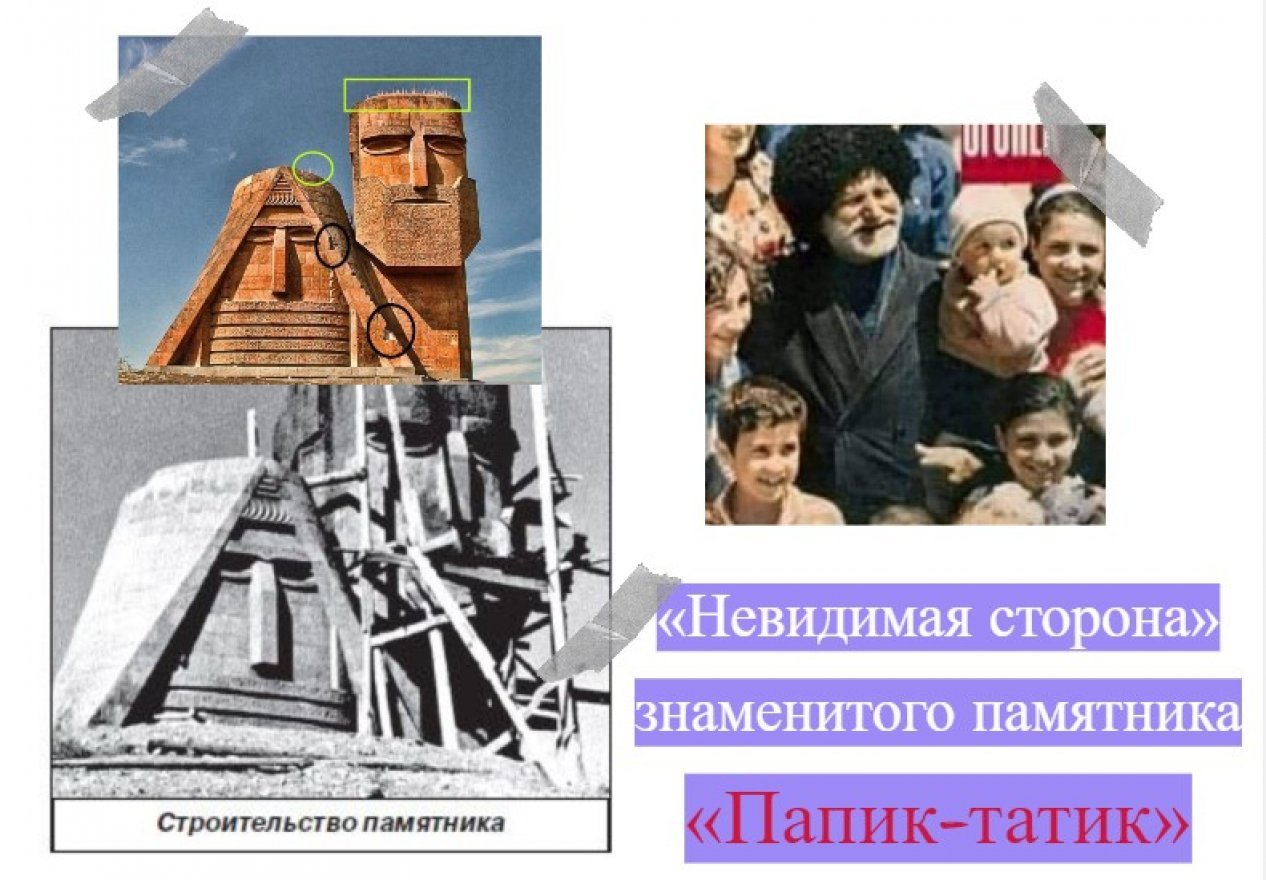
Since the anti-terrorist measures carried out on September 19-20, Armenian officials and media have been constantly disseminating reports that the Armenian historical heritage in Karabakh will be dismantled and destroyed. Information of this kind is more clearly expressed in connection with the monument “We are our mountains”, erected in 1967 on the territory of the Askeran region of the Nagorno-Karabakh Autonomous Oblast (NKAO) of the Azerbaijan SSR, near the city of Khankendi.
The telegram channel Baghramyan26, close to the leadership of Armenia, with reference to the Armenian Embassy in the Netherlands, writes that the monument “We are our mountains” is under threat of demolition.

The channel Sis-Masis, with reference to the Polish blogger Tomasz Buczek, known for his anti-Azerbaijani hysteria, pro-Armenian stance, provocative and disinformation publications, writes that one of the Azerbaijani opposition bloggers living in Germany (name, surname, identity not specified - ed.) said that a decision was made to demolish the mentioned monument.

In fact, the Armenians say that this monument was erected in honor of the long-livers living in Karabakh, and for some reason they call it an Armenian monument. Armenian authors who present this monument as a “monument to freedom” of the terrorist regime that occupied Karabakh for 30 years, and say that this preserved “historical monument” is confirmation and proof of Armenian identity in Karabakh. Azerbaijan wants to erase the Armenian historical past in the region by destroying monuments on the territory of Karabakh.
Faktyoxla Lab. has studied these claims and more about the "hidden side" of the monument.
First, let's give some brief information about who owns the monument.
Indeed, the author of the monument, which opened on November 1, 1967, is the Armenian sculptor Sarkis Baghdasaryan.

Sculptor Sarkis Baghdasaryan
Sarkis Baghdasaryan, a resident of Khojavend, was a citizen of the Azerbaijan SSR (born in the village of Binadaresi, Khojavend region), and the monument was erected on the territory of Azerbaijan at the expense of the budget of the Azerbaijan SSR. It was only in the late 1980s, when Armenian-sponsored terrorists claimed to have created a so-called regime in Karabakh, that they remembered the “We Are Our Mountains” monument and began to present it to the world as an Armenian cultural heritage. In September 2013, the monument was restored with funds from Armenian businessman Karen Avagumyan, who lives in Moscow, the son of the founder of the Avilon auto holding, Kamo Avagumyan.
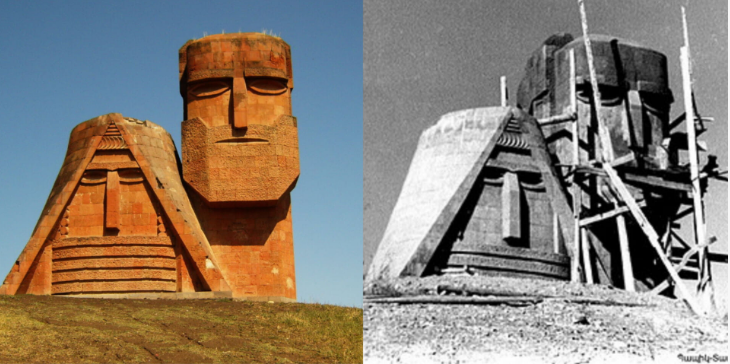
On the other hand, sculptor Sarkis Baghdasaryan initially named the monument he created near Khankendi in 1967 at the expense of the budgetary funds of the Azerbaijan SSR, “Karabakh People”. When we say “Karabakh people”, we are talking not only about the Karabakh Armenians, but also about the Aghdam, Terter, Shusha and Barda residents, who are also Karabakh.
Another important point. The newspaper Pravda dated December 31, 1976, issue number 365, wrote about the architectural object “We are our mountains”: “The monument is the first monument in the world built in honor of centenarians.” This quote can also be found in Sh. Mkrtchyan’s book “History and Architectural Monuments of Nagorno-Karabakh”, published in 1988.
If it is claimed that this monument was erected in honor of the centenarians living in Karabakh, then why do they not remember Shirin Hasanov, who for some time was considered the oldest among the centenarians in the world?
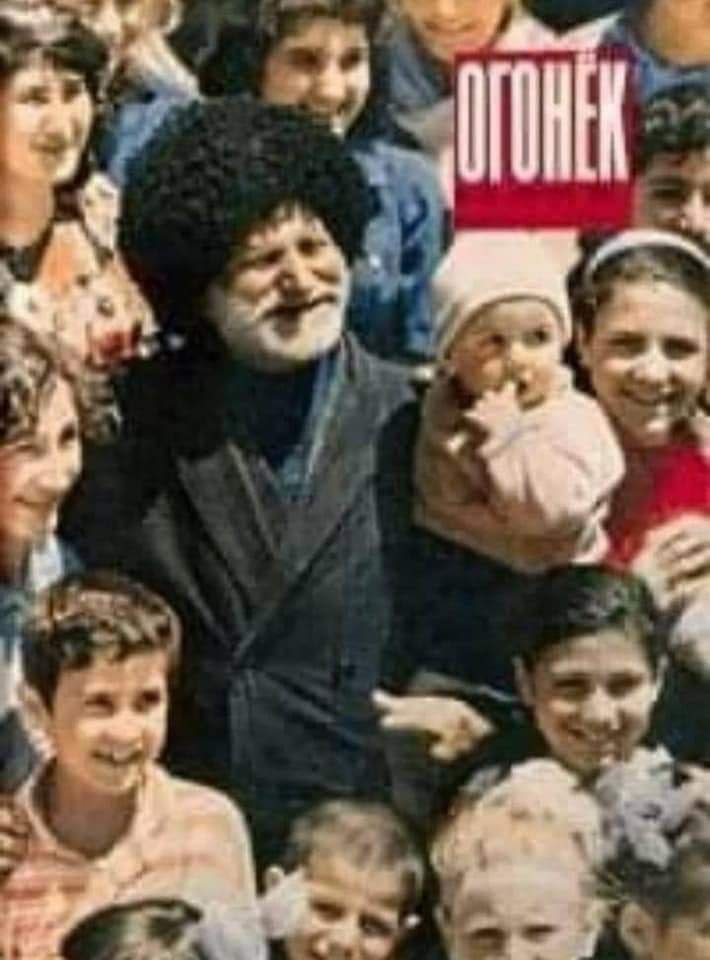
Let's look at the facts indicating that the opening of the monument was timed to coincide with the 150th anniversary of Shirin Hasanov, the most famous Karabakh centenarian, born in 1817 in the Karabakh Khanate:
- January 1, 1967 - Shirin Hasanov turns 150 years old;
- August 1967 - an article about Shirin Hasanov was published in the 32nd issue of the Ogonyok magazine.
- November 1, 1967 – grand opening of the monument “We are our mountains.”
- 1976, December 31 - The Pravda newspaper mentions the installation of this monument in honor of centenarians.
Now let's look at the second part of the study - the “hidden side” of the monument in both senses of the word.
It is possible to find countless articles, photos and videos about the monument “We are our mountains” in the media and social networks of Armenia. Armenian intellectuals, historians, journalists and bloggers wrote praises of the monument, spreading their fake history and promoting it to attract tourists to the region. But in these photos and videos, they unknowingly showed the real state of the monument, or rather its dilapidated state.
The photos we are going to present are taken from Armenian media and social networks.
These photos show how the covering of the monument became moldy under the influence of snow and rain,
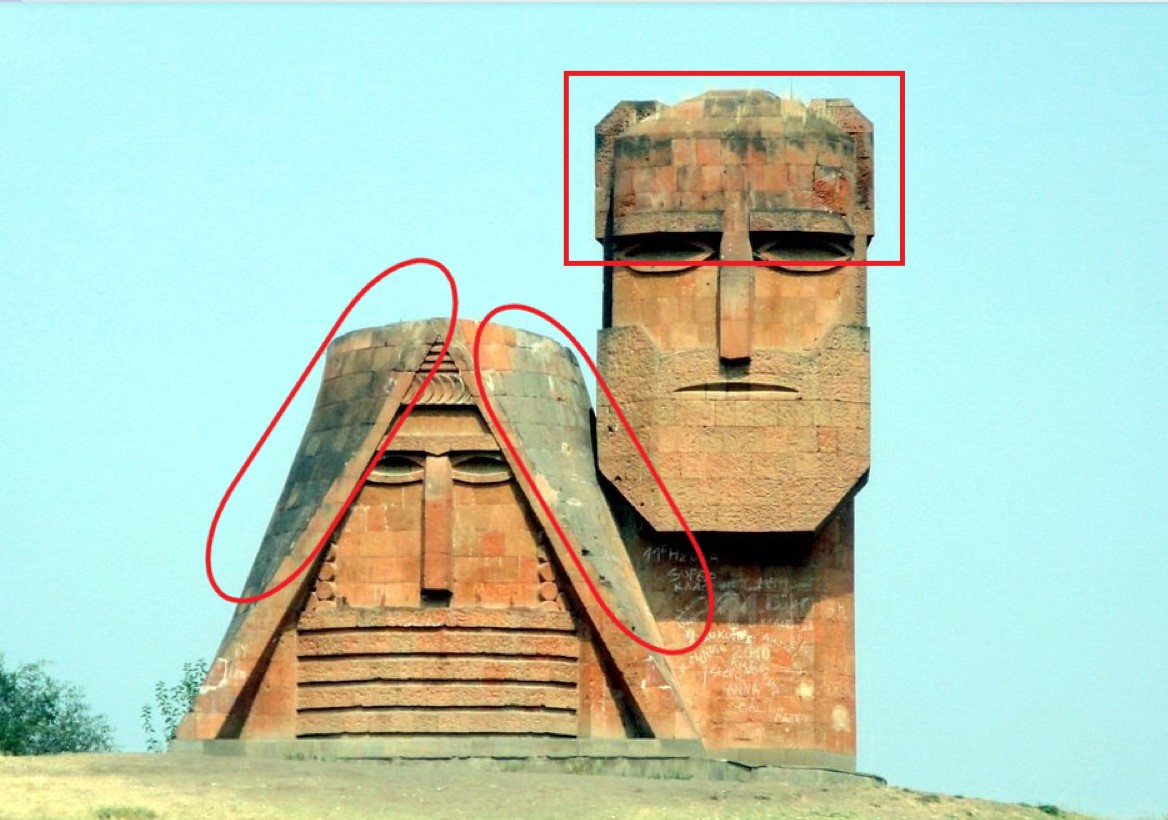

some stones broke off due to erosion,
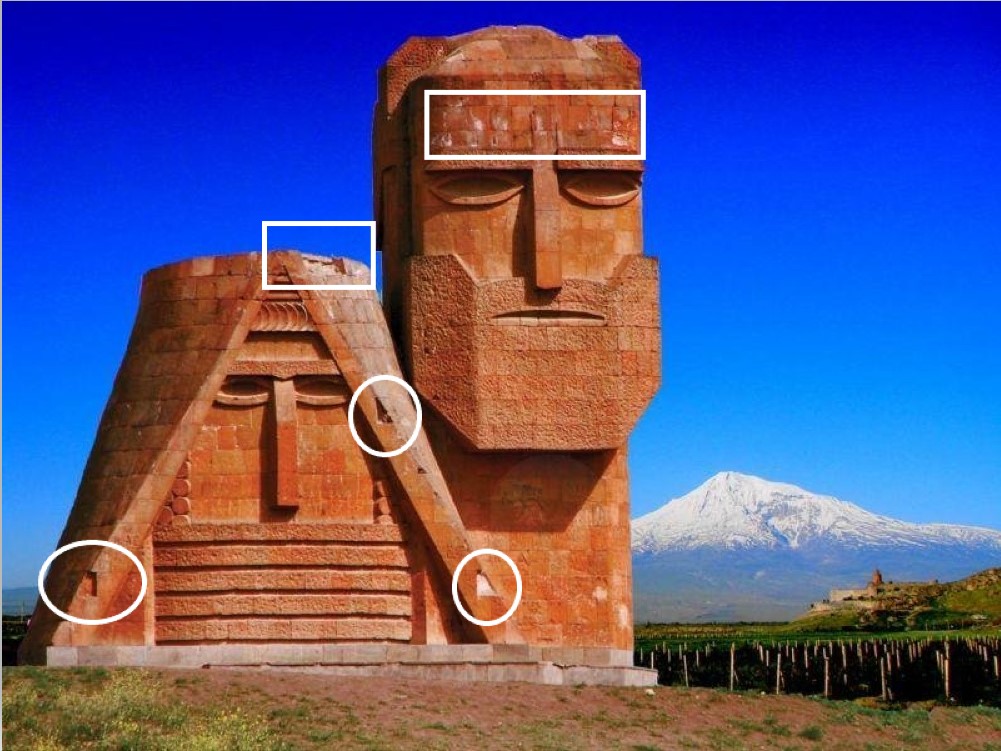
salt crystallization,


and you can even see how, due to carelessness, weeds broke through the stones.
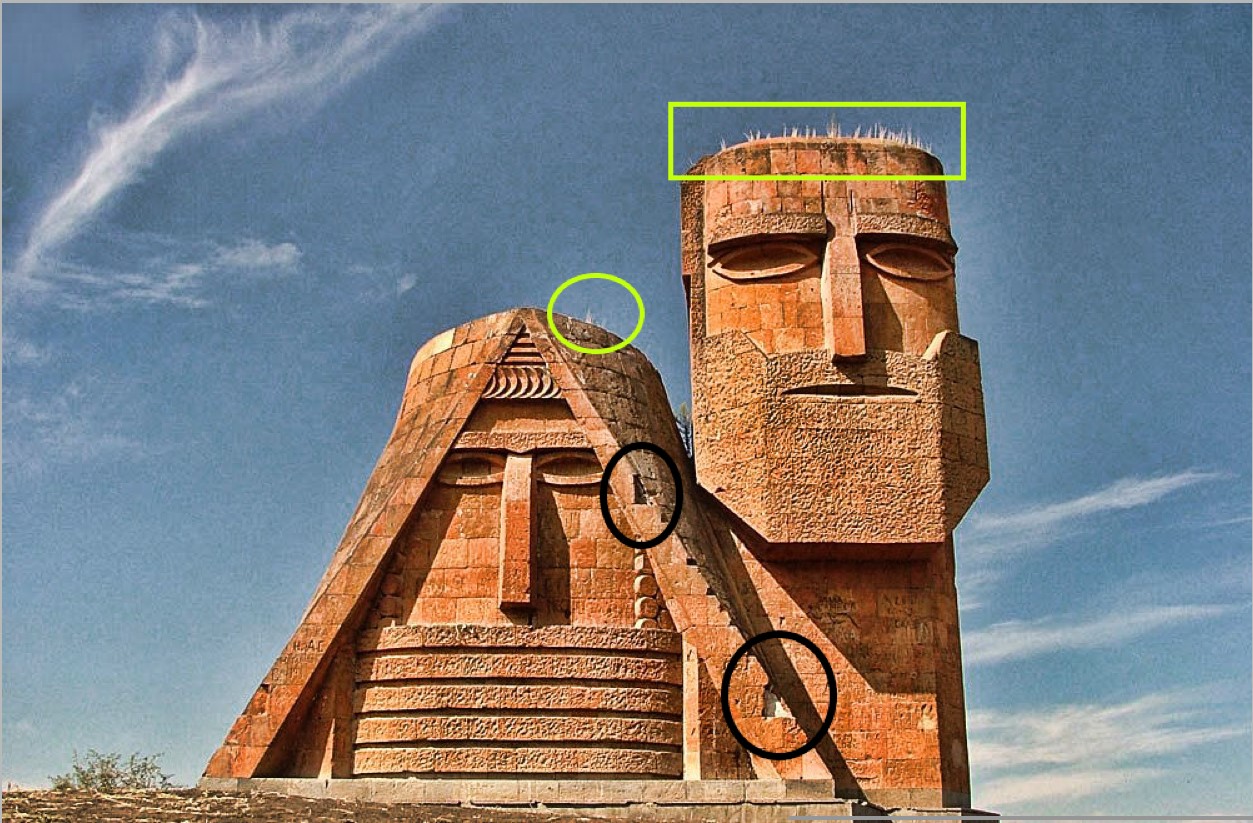
In addition, it is clear that the monument was painted by Armenian youth.
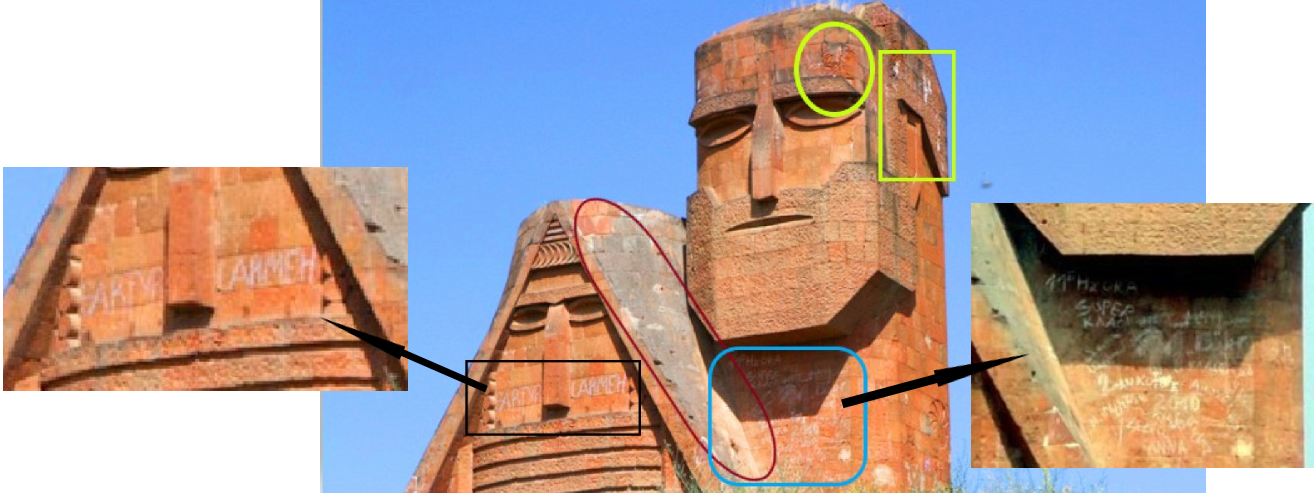

We would like to draw attention to one more point regarding the vandalism and destruction of this monument by the Armenians - the “invisible aspects” of the monument. During our research, we noticed that the background of the monument was not visible in most of the photos and videos we viewed. Based on this nuance, we looked through several sources and discovered what the “secret” the Armenians actually hid behind the monument. The Armenians themselves admit this. Thus, the editor-in-chief of the newspaper New Page published in Khankendi, Vardges Ovian, published an article sharply criticizing the destruction of the monument due to the neglect and actions of officials of the terrorist regime who were temporarily in charge of Khankendi.

Vardges Ovian
In the article “We are our mountains” is not in a deplorable state, but in a shameful state,” the author quotes an article by the youth movement “We will not be silent” about the shameful state of “We are our mountains” and the response of the so-called Deputy Mayor of Khankendi Armen Avakyan at news.am. He writes: “First of all, the monument “We are our mountains” is not a handkerchief that you can put in your pocket and calmly declare that it is clean, because there is a washing machine in our house... Secondly, “We will not be silent” movement reports not on the deplorable state of the monument but another shameful situation.”
And as evidence, he attached a video recording dated September 12, 2011 to the news he distributed. That is, when the author speaks of “another shameful situation,” he means that the monument is used by people to satisfy their physiological needs and that the stench of uncleanness spreads around.

Vardges Ovian writes: “I know one thing for sure: one of the monuments of our culture is in disrepair today. We are talking not only about the inscriptions and carvings made on the statue by various idiots who “stamped” their pathetic name on the monument, thinking that this is the shortest path to immortality. The point is that the stones of the memorial are broken or badly dented in places, and grass and weeds are overgrown on the monument, or more precisely on the head of the poor grandfather...”
According to the author’s conclusion, the monument “We are our mountains” today is not only a symbol and cultural value, today it has unwittingly become stone evidence of another phenomenon called “We are our problems.”
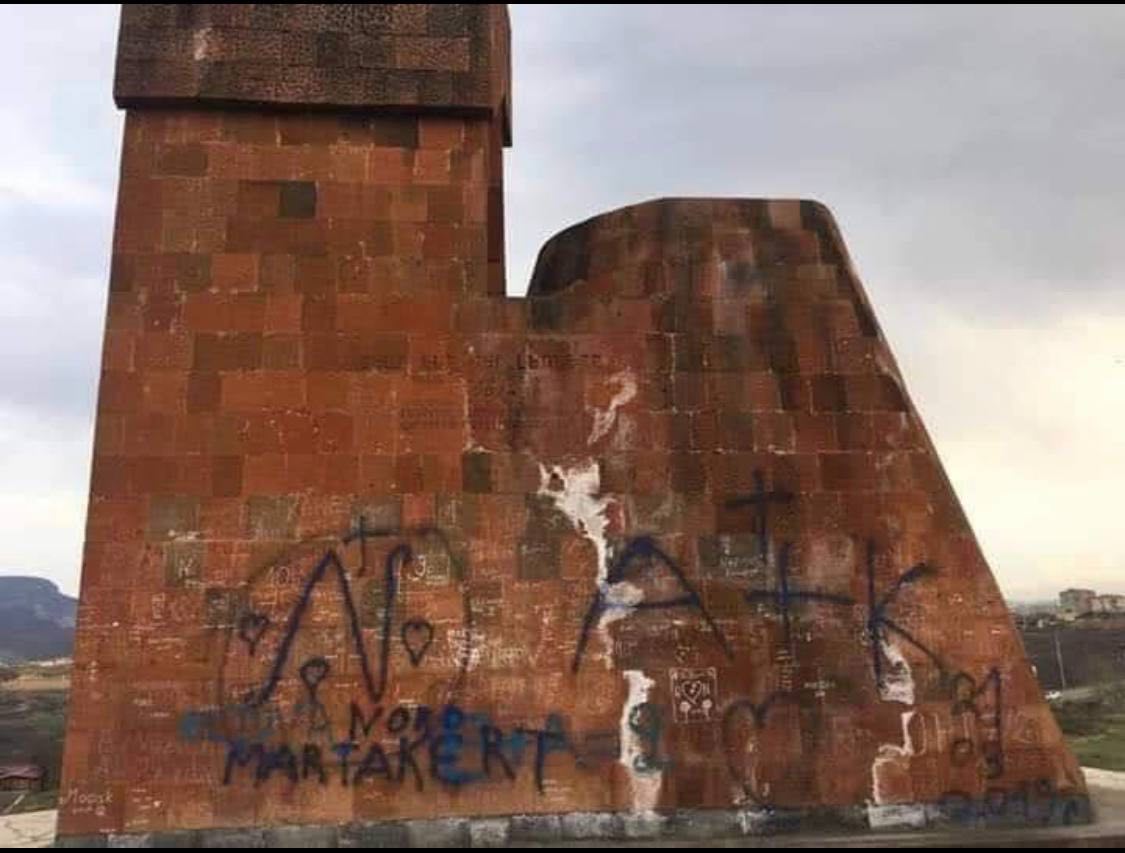
By the way, even in Soviet times there was a half-hearted attitude towards the mentioned monument. Ilham Jamiloglu, an Azerbaijani journalist who lived in Khankendi, writes about this: “As a resident of Khankendi, I can note that during the Soviet period it was not allowed to hold any events in front of this monument. Officials who came to Khankendi from Baku and Moscow never visited this monument. The abandoned green area around “We are our mountains” has become a secret place of entertainment for drunkards and Armenian prostitutes.”
In conclusion, let us draw the attention of the Armenian side to one fact: after the liberation of Khankendi from occupation, the Azerbaijani side for the first time established a police post near this monument. This is an indicator of the value and attention paid to historical monuments and cultural heritage of the Azerbaijani state.

Conclusion:
- The monument, which the Armenians call “Papik-tatik”, has nothing to do with the Armenians and Armenia, except for the nationality of the sculptor;
- During the occupation, the monument fell into disrepair due to the neglect of the Armenians and was even used by the Armenians to satisfy their physiological needs;
- The Azerbaijani side has no initiative to dismantle and destroy this monument, and this is yet another disinformation spread by the Armenians.




















